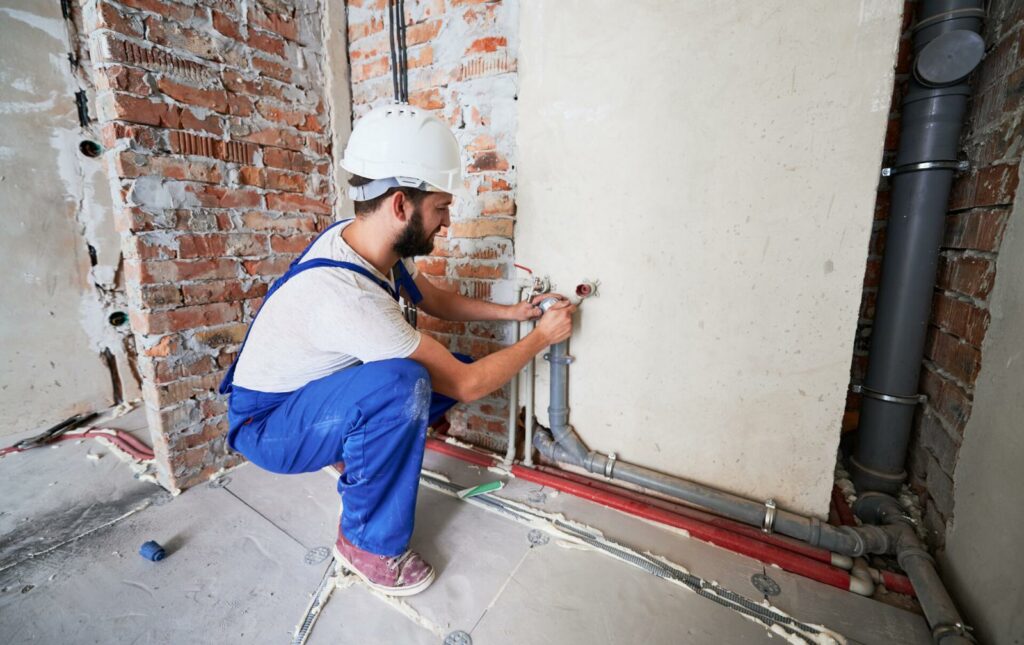You may be wondering why it’s so important to choose the best materials for your heating pipes. After all, isn’t any pipe good enough as long as it gets the job done?
Well, not quite. When it comes to heating pipes, durability and longevity are key factors that can save you a lot of time, money, and headaches in the long run.
So, if you’re looking for a solution that will stand the test of time and ensure efficient heating for years to come, then keep reading to discover the essential considerations and factors to take into account when choosing the best materials for your heating pipes.
Long-lasting Heating Pipes – Key Takeaways
- Corrosion-resistant materials like stainless steel and copper-nickel alloys are recommended for long-lasting heating pipes.
- High-temperature resistance is important, and materials like stainless steel, copper, alumina, and silicon carbide are suitable options.
- Efficient insulation is crucial for minimizing heat loss and improving energy efficiency, and the choice of insulation material and proper installation techniques are important considerations.
- Thermal expansion should be addressed by selecting materials with good thermal expansion properties, such as copper, stainless steel, and PEX, and using expansion joints when necessary.
Corrosion-Resistant Materials
When choosing heating pipe materials, it’s important to consider corrosion-resistant options to ensure long-lasting and efficient performance. Corrosion prevention techniques are crucial in maintaining the integrity of heating pipes, as they protect against the damaging effects of rust and degradation. By utilizing corrosion-resistant materials, you can ensure the longevity of your heating system while minimizing the need for costly repairs and replacements.
One of the primary advantages of corrosion-resistant materials is their ability to withstand the harsh conditions often found in heating systems. These materials are specifically designed to resist corrosion caused by exposure to high temperatures, moisture, and chemical substances commonly found in heating pipes. By choosing materials such as stainless steel or copper-nickel alloys, you can significantly reduce the risk of corrosion and extend the lifespan of your heating system.
Furthermore, corrosion-resistant materials offer superior durability and strength, making them an ideal choice for heating pipe applications. They can withstand the constant pressure and stress that heating systems endure, ensuring that your pipes remain intact and functional for an extended period. This longevity eliminates the need for frequent replacements and repairs, saving you time, money, and the hassle of dealing with a malfunctioning heating system.
In addition to their durability, corrosion-resistant materials also contribute to the overall efficiency of your heating system. By preventing corrosion, these materials ensure that there are no blockages or restrictions in the pipes, allowing for a smooth and uninterrupted flow of heated water or air. This leads to improved energy efficiency, as the system can operate at optimal levels without any hindrances.
High-Temperature Resistant Options
Looking for materials that can withstand high temperatures? You’re in the right place.
When it comes to heating pipe systems, it’s crucial to choose durable, heat-resistant materials that can handle the demands of high temperatures.
Additionally, efficient insulation options play a key role in maintaining the heat and preventing energy loss.
Let’s explore the best options for your high-temperature-resistant needs.
Durable Heat-Resistant Materials
To ensure durability and resistance to high temperatures, it’s important to choose heat-resistant materials for your heating pipes. When selecting materials, two crucial factors to consider are thermal conductivity and thermal expansion.
Thermal conductivity refers to the material’s ability to transfer heat efficiently, while thermal expansion is its tendency to expand or contract with temperature changes.
For long-lasting heating pipes, there are several options available. One popular choice is stainless steel, known for its excellent heat resistance and durability. Another option is copper, which has high thermal conductivity and can withstand high temperatures.
Additionally, ceramic materials like alumina and silicon carbide offer exceptional heat resistance and low thermal expansion.
Efficient Insulation Options
Now let’s explore efficient insulation options for high-temperature resistance after considering the durability and heat resistance of different pipe materials.
When it comes to ensuring efficient insulation for heating pipes, it’s crucial to consider both thermal conductivity and moisture resistance. Thermal conductivity refers to the ability of a material to conduct heat, and choosing an insulation material with low thermal conductivity can help minimize heat loss and improve energy efficiency.
Additionally, moisture resistance is essential to prevent any potential damage caused by the presence of moisture or water vapor. Opting for insulation options that are highly moisture-resistant can help maintain the integrity and longevity of the heating pipes.
Strength and Durability Factors
When considering heating pipe materials, it’s important to prioritize strength and durability factors. The choice of pipe material is crucial in ensuring a long-lasting and reliable heating system. You want a material that can withstand the pressures and stresses that heating pipes endure while also minimizing maintenance requirements.
One key factor to consider is the strength of the pipe material. It should be able to handle the high temperatures and pressures that heating systems generate. Materials like copper and stainless steel are known for their strength and can withstand these conditions effectively. They’re also resistant to corrosion, which further enhances their durability.
Durability is another crucial aspect to consider. The pipe material should be able to withstand the test of time without succumbing to wear and tear. Materials like PVC and PEX are known for their durability and longevity. They’ve a high resistance to impact and can handle extreme temperature changes without cracking or breaking.
Additionally, it’s important to consider the maintenance requirements of the chosen pipe material. Some materials may require frequent inspections or maintenance to ensure their performance and longevity. Others, like PEX, have low maintenance requirements, making them a popular choice for heating pipe installations.
Considerations for Thermal Expansion
Now, let’s talk about the considerations for thermal expansion when choosing heating pipe materials.
When pipes are exposed to temperature changes, they expand and contract, which can lead to stress and potential damage.
It’s important to consider the compatibility of materials to ensure they can withstand these thermal fluctuations without compromising the integrity of the system.
Expansion and Contraction
To ensure the longevity and efficiency of your heating system, it’s crucial to consider the effects of thermal expansion on your choice of heating pipe materials. Thermal stress caused by temperature changes can lead to pipe expansion, which, if not properly accounted for, can result in pipe failures and leaks.
It’s important to select materials that can withstand these expansion and contraction forces without compromising the integrity of the pipes. Materials such as copper, stainless steel, and PEX (cross-linked polyethylene) are known for their excellent thermal expansion properties. They can expand and contract without causing significant stress on the pipes.
Additionally, using expansion joints, which allow for movement, can help accommodate thermal expansion and minimize the risk of damage to the heating system.
Material Compatibility
Proper consideration of material compatibility is essential when it comes to addressing the thermal expansion concerns in your heating system. To ensure the longevity and efficiency of your pipes, follow these key points for pipe material selection:
- Understand thermal expansion: Different materials have varying rates of expansion and contraction when exposed to heat. It’s crucial to choose materials that can withstand these changes without compromising the integrity of the system.
- Consider thermal conductivity: The ability of a material to conduct heat affects its response to thermal expansion. Opt for materials with high thermal conductivity to efficiently distribute heat throughout the system.
- Evaluate compatibility with other materials: When selecting pipe materials, consider their compatibility with other components in the heating system. Incompatible materials may lead to corrosion, leaks, or other issues that can affect the overall performance.
- Seek professional advice: Consulting with experts in the field can provide valuable insights into the best material choices for your specific heating system, ensuring compatibility and long-lasting performance.
Choosing the Right Pipe Size
When selecting the appropriate pipe size for your heating system, consider the specific requirements and demands of your heating installation. Pipe diameter selection plays a crucial role in ensuring efficient heat transfer and maintaining the optimal performance of your heating system. To make the right choice, you need to take into account factors such as the thermal conductivity of the pipe material and the heat load of your system.
The thermal conductivity of the pipe material determines how well it can transfer heat. Pipes with higher thermal conductivity are more effective at transferring heat from the heat source to the surrounding environment. Copper pipes, for example, have excellent thermal conductivity, making them a popular choice for heating systems. On the other hand, pipes made from materials with lower thermal conductivity, such as PVC or PEX, may require larger diameters to compensate for their lower heat transfer capabilities.

